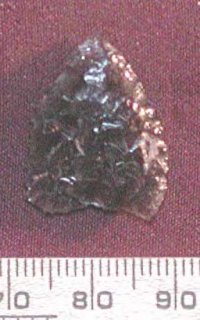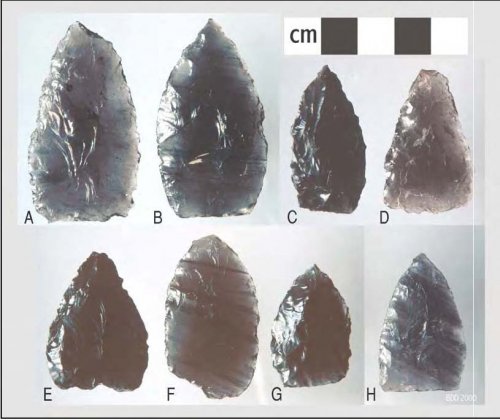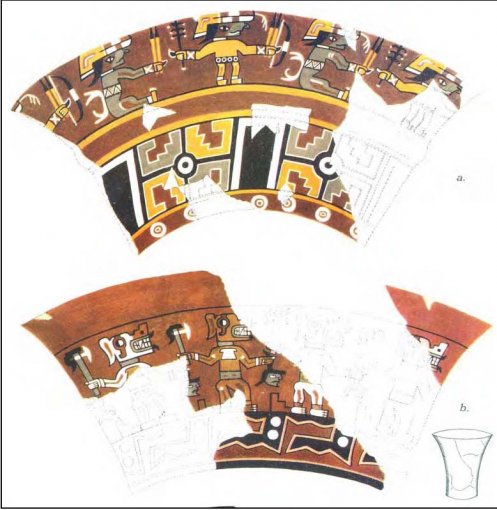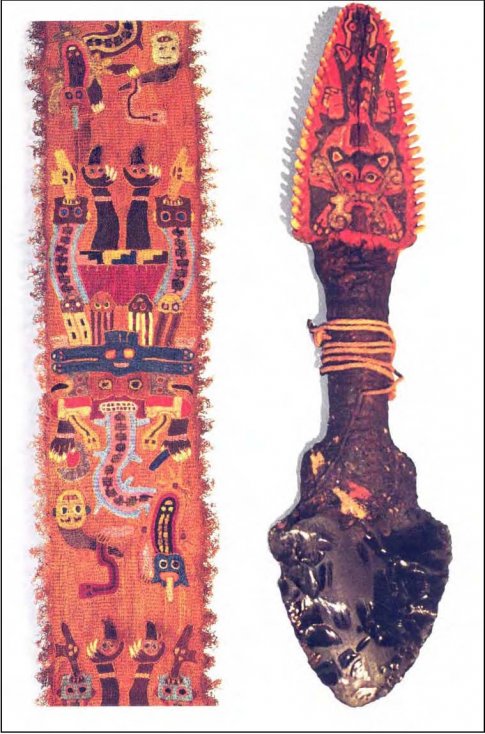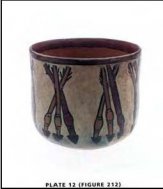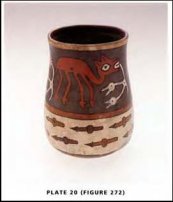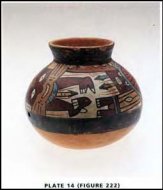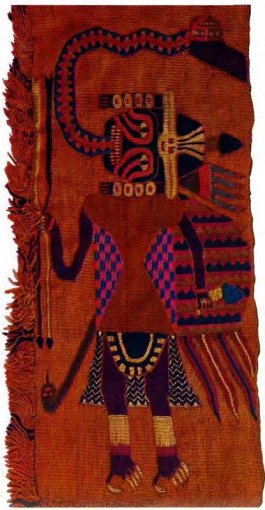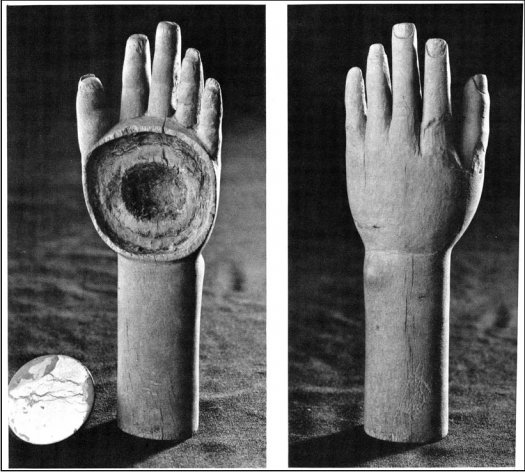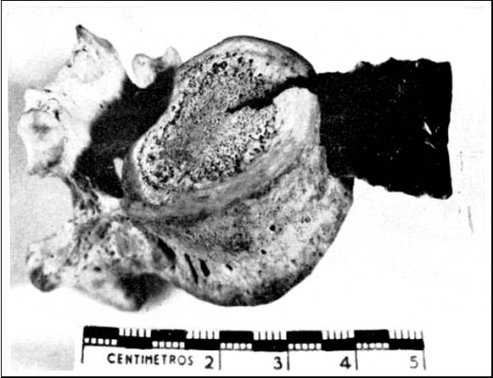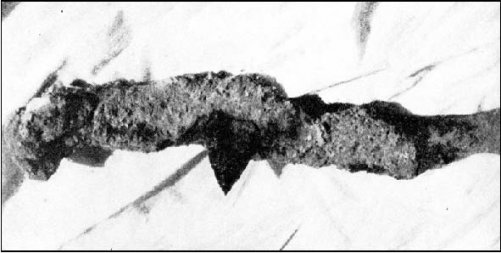Appendix C - Examples of Obsidian Tools
Obsidian Tools from the Larger Region
These photos present some examples of the diversity of formal obsidian tools that have been found in the south-central Andes (Burger and Asaro 1977: 14-17). A discussion of obsidian use in the region can be found in this dissertation in Section 3.6. By count, and perhaps by weight, the most common obsidian artifact type in the region is the simple flake. Obsidian flakes have wide utility as cutting implements. The most common bifacial implement produced with obsidian was without question the projectile point. The points are predominantly the small, triangular point variety that was produced after 3,300 BCE in the south-central Andes. It is important to note that many of the photos below, meant to illustrate various obsidian forms in the central and south-central Andes, are fine examples of obsidian implements but (apart from the first few images) the tools were likely made from Quispisisa rather than Chivay obsidian because they derive from Nasca and Wari contexts. Photos of a selection of artifacts found in the Upper Colca project are found above in the text, or can be browsed online at http://mapaspects.org/colca/archweb/
Figure C-1. Obsidian projectile points from the Upper Colca survey project. (a) stemmed point from Block 2 [A03-260] was classified as a 4d (Late Archaic); (b) obsidian point from Block 2[A03-411] is a type 1b (Early Archaic) or a 2c (Middle Archaic) form.
|
Figure C-2. Obsidian point (Cat. 609) from Terminal Archaic context at Jiskairumoko, XRF showed this to be from the Chivay source (Craig 2005: 834, 913).
|
Figure C-3. Bifacially flaked obsidian "Wari style" points or knives from surface contexts in Moquegua as part of the "Catrastro Arqueológico del Drenaje del Osmore Superior" (B. D. Owen and Goldstein 2001: Fig. 11 ). A. From site 295; B. Site 366; C. Site 314; D. Site 135; E. Site 354, Pampa del Arrastrado; F. Site 354, Pampa del Arrastrado; G. Site 354, Pampa del Arrastrado; H. Site 561, Cerro Baúl formal architecture. Photos courtesy of Bruce Owen.
Figure C-4. Rollout of Tiwanaku q'ero showing bows and black-tipped arrows (top) near the rim of vessel (Posnansky 1957: XXa ).
Figure C-5. Early Nasca ritual obsidian knife hafted to painted dolphin palate (Disselhoff 1972: 277 ).
Figure C-6. Representations of black-tipped projectiles are diagnostic to Nasca B1 and B2 ceramics (Carmichael et al. 1998: 151 ).
Figure C-7. Paracas textile with figure holding black-tipped projectiles (Lavalle and Lang 1983: 950 )
Figure C-8. Wooden hand mirror with obsidian inlay, Wari (Lavalle 1990: 185).
Figure C-9. Obsidian point hafted on harpoon found in a Paracas necropolis, Ica, Peru (Engel 1966: 180c ).
Figure C-10. An obsidian point embedded in a human lumbar vertebra that apparently entered through the stomach (from Ravines 1967: 230).
Figure C-11. Obsidian Point penetrating through arm muscle near left humerus found at Carhua in Ica, Peru (Engel 1966: 212 ).

![Late Archaic 4D stemmed projectile point Stemmed point from Block 2 [A03-260] was classified as a 4d (Late Archaic)](../../../sites/default/files/resize/Diss_images/Append/appendC_9-200x364.jpg)
![Type 1B or 2c Projectile Point obsidian point from Block 2[A03-411] is a type 1b (Early Archaic) or a 2c (Middle Archaic) form.](../../../sites/default/files/resize/Diss_images/Append/appendC_10-150x295.jpg)
